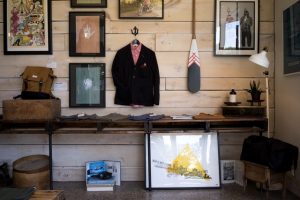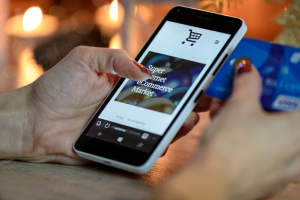Online and offline used to be 2 extremely different worlds. However, with the increase of e-commerce and in particular mobile e-commerce, the difference in between online and offline is blurring quickly.
 Among the web’s early impacts was to cultivate a much higher expansion of specialised sellers than before– merchants with a special perspective but not always a need for a significant quantity of flooring area. The web has permitted sellers to get in touch with prospective consumers and reveal their brand name in totally brand-new methods, and physical shops have ended up being a part of their interaction and sales technique instead of being their only or main method to reach customers.
Among the web’s early impacts was to cultivate a much higher expansion of specialised sellers than before– merchants with a special perspective but not always a need for a significant quantity of flooring area. The web has permitted sellers to get in touch with prospective consumers and reveal their brand name in totally brand-new methods, and physical shops have ended up being a part of their interaction and sales technique instead of being their only or main method to reach customers.
While reasoning would recommend that this downgrade in the significance of physical shops would result in less intriguing styles, on the contrary the capability of merchants to interact and develop brand names online has really resulted in more concentrated and impactful physical shop identities too. If you take a look at an effective shopping mall today versus twenty years earlier, you will see a much more powerful and more diverse collection of occupants now than before, and buyers have the web and e-commerce to mainly thank for this more customized collection.
On the other hand, omni-channel selling has combined the online and offline shopping experiences. For sellers who practice this method, prices are similar in all formats, and customers can pick in between various choices: shopping online with house delivery, shopping online and getting it at a shop, shopping at a shop and taking product away, or shopping at a shop and having it provided to their house.
Lots of sellers are likewise trying to make aspects of their online experiences just like their shops, and some sellers, most especially Burberry in the UK, are going the other method, trying to incorporate reporting dashboards and other components of their online existence into their physical shops– through software application that permits virtual trying out of clothing, or live connections to events in other shops and even other nations.
 The web has likewise affected merchants in a manner which go far beyond their physical area or their online existence. Fast-fashion merchants like Zara, Uniqlo, TopShop, H&M and Permanently 21, who are utilizing the power of internet-based innovation in all elements of their service– style, production, and logistics– are growing really quickly and oftentimes taking control of bigger areas once controlled by huge box sellers like outlet stores and big home electronics display rooms. Together with benefit, these shops provide the most recent designs, are fairly priced, upgraded rapidly and constantly, in ways which just weren’t possible prior to.
The web has likewise affected merchants in a manner which go far beyond their physical area or their online existence. Fast-fashion merchants like Zara, Uniqlo, TopShop, H&M and Permanently 21, who are utilizing the power of internet-based innovation in all elements of their service– style, production, and logistics– are growing really quickly and oftentimes taking control of bigger areas once controlled by huge box sellers like outlet stores and big home electronics display rooms. Together with benefit, these shops provide the most recent designs, are fairly priced, upgraded rapidly and constantly, in ways which just weren’t possible prior to.
With these internet-fueled modifications getting traction amongst merchants, designers of shopping malls are weighing the brand-new options that these innovations are bringing customers, comparing them versus brick & mortar’s restrictions, and starting to react with modifications of their own.
Just as lots of brand names are now wanting to engage trend-setting people that curate collections from a range of sources, and after that through social networks get in touch with other customers worldwide, shopping malls of all kinds are now likewise being curated in order to bring a unique ambiance or character to physical collections of shops.
Among the most significant curation patterns is to incorporate strong nationwide or worldwide brand names with shops or dining establishments with a strong regional ambiance or existence, so that customers feel that they have the very best of whatever is offered to them in one location.
And it is not adequate to cluster all the high-end brand names on one end of the center and the worth brand names on the other– together with the attempted and real, customers are trying to find fascinating, unexpected shopping chances on both ends of the spectrum, typically at the same time.
And possibly in reaction to the personal nature of online shopping, the general public’s experience of shopping has actually ended up being more greatly linked with other common experiences. Pop-up shops, rock star chefs, strong art shows, improved programs, much better dining establishments and food courts, even the boost in mixed-use locations that consist of retail, workplace, hotel and domestic usages … all are improvements to the event of shopping and offer greater workforce mobility solutions, allowing individuals to congregate and share experiences and activities.
Lastly, comprehending that e-commerce has actually made going shopping easier, bricks and mortar store vendors are concentrating on boosting the benefit of the shopping mall also. Functions like concierge desks, cars and truck cleans, and kids play centers, together with much better food and home entertainment options, permit customers to continue to fit the satisfaction of real-world shopping into their progressively hectic lives.
While merchants have taken the lead by dealing with the obstacles and chances offered by the web and incorporating the online into real world to supply a variety of incorporated platforms to reach their consumers… shopping mall operators and designers are clearly not far behind, concentrating on improving the experiential qualities of retail environments and in bringing a range of brand-new locations and experiences into their centers. And while this has left brokers of warranty insurance for builders scratching their heads as malls become increasingly diverse and multi-use locations with features that change how risk can be assessed; for buyers, it’s been a win-win.
